Strength training is available to anyone at any age, and is more crucial than ever as we age. In this article, we dive into why you need to strength train if you’re an older adult, surprising research finds, and how to start.
Want to listen instead? Check out the podcast episode:
Why Strength Training Matters for Older Adults
There is no better time to start strength training than the present moment, and it’s never too late to start. Strength training is the secret to knowing how to age well, by supporting joint health, muscle growth, and metabolic function. As you age, your bone density and muscle mass begin to decline, which strength training can prevent and actually reverse. In fact, it’s not uncommon for people with osteoporosis to actually stop bone density loss and even regain a healthier bone density through strength training. Strength training has been shown to not only decrease falls in later years, but to prevent bones from breaking when they occur.
It’s also a bit of a myth that your metabolism has to slow as you age. Although most older people do have a slower metabolism, this only happens because of a lack of movement and decline in muscle mass in the older years of life. Strength training, regardless of age, improves metabolism by building muscle, which needs more energy to sustain.
Understanding Sarcopenia: Preventing Age-Related Muscle Loss
Sarcopenia is a preventable muscle disease that causes muscle loss, a decrease in strength, and loss of general physical function. Sarcopenia can affect younger people due to malnutrition, obesity, and extreme de-conditioning, but is most commonly associated with aging. However, sarcopenia doesn’t have to be a natural part of aging. Your body starts to lose muscle mass in your 30s, which increases substantially as you age, but that is completely preventable and reversible if you strength train and move your body. A body in motion stays in motion. And strength training is the best way to prevent and even reverse age-related muscle loss, no matter what your current body composition is.
Starting Strength Training For Older Adults
If you’re starting strength training at an older age, your routine won’t look that much different than anyone else’s. You’ll still train major movement patterns: you might not be doing barbell back squats, but you’ll be completing the foundational movement patterns that are essential in any routine. These movements are the key functional movements we all perform as humans, so strengthening them is the main priority of any fitness program.
Programming is far more nuanced, and form becomes even more important as you get older to prevent injury. That’s why it’s absolutely best practice to hire a personal trainer if you’re able to do so. A trainer will ensure your form is on point and can regress any major movement patterns based on current weaknesses or limitations. With the guidance of a skilled trainer and a well-structured program, you can strength train safely while still achieving the intensity needed for real progress.
How to Build Strength Safely and Effectively
A 2025 review of multiple studies found that heavy strength training in frail and diseased populations is not only safe but also highly effective for improving strength outcomes and functional performance. The review showed that older adults experience greater improvements in muscle strength with heavy or very heavy training compared to moderately heavy training. This was true not only for healthy older adults, but also for patients with osteopenia or osteoporosis, recent hip surgeries due to falls, stroke survivors, those with heart conditions, hypertension, COPD, and even cancer. Overall, the review suggests that both healthy and diseased older adults can (and should) train with heavier loads than current guidelines recommend.
Some considerations of this study to keep in mind are:
- Lifting heavy is always relative, and will look different for everyone.
- There will always be an adaptation and learning phase to every program. You need to master the movement before adding load (especially heavy load).
- Concentric loading carries the least risk, so focus on controlling the eccentric phase of each movement.
- This research suggests adding a pause before the concentric phase of the movement, then moving with maximal velocity. In other words: control the descent, pause at the bottom, then explode up.
- Everyone is different. There may be some special cases. Always consult your doctor when you are starting any physical activity program if you have questions or concerns.
Safe Considerations for Older Adults with Arthritis
Strength training remains one of the best things you can do if you have arthritis. Exercise is considered an essential part of any arthritis treatment plan by the American College of Rheumatology (ACR), Arthritis Foundation, Centers for Disease Control and Prevention (CDC) and World Health Organization (WHO). Strength training is recommended more than any other exercise by the Arthritis Foundation.
Strength training with arthritis can:
- Reduce pain, fatigue and inflammation
- Strengthen muscles, joints and bones
- Improve balance
Here are some considerations to make if you have arthritis:
- Work with a physical therapist or personal trainer so they can demonstrate proper form, which is critical to avoiding injury.
- Form is more important than load/intensity
- Listen to your body
- Choose compound exercises as a priority
- Try bands. If you have arthritis in your hands or lack the strength to grip weights, exercise bands are a great alternative.
- To protect shoulder joints, perform shoulder exercises seated or on an incline bench
- Always avoid locking out your joints!
- Isometric exercises produce muscle contraction but no motion in the joint and can be performed instead of a movement if you’re in severe pain
- Pay special attention to the eccentric (lowering) portion of each exercise, keeping it controlled to protect your joints and tissues.
Tips to Stay Consistent and Motivated
Aging can be awesome when you approach it with strength, community, and intention. Lift heavy and safely and with good form and programming provided by a trainer. Working out with a trainer also provides accountability for getting up and moving. Eat enough protein to support your muscles and recovery. Surround yourself with people who encourage and inspire you.
And, as important as strength training, walk. Find friends to go on walks with and try to hit 8,000 steps a day. The health benefits of walking are numerous.
Embracing Strength Training at Any Age
There are no shortcuts when it comes to maintaining or pursuing good health. At any age, strength training is challenging, and it requires you to show up for a sustained period of time to see results. Commit to working out 2-4 times a week, and you will see improvements in bone density, strength, muscle mass, and increased metabolism. No one is exempt from these positive adaptations. So, what are you waiting for?
Want to learn more about strength training as an older adult? Listen to episode 252 of the Stronger Than Your Boyfriend Podcast: How to Start Strength Training as an Older Adult
References:
Tøien, T., Berg, O. K., Modena, R., Brobakken, M. F., & Wang, E. (2025). Heavy strength training in older adults: Implications for health, disease and physical performance. Journal of Cachexia, Sarcopenia and Muscle, 16(2), e13804. https://doi.org/10.1002/jcsm.13804
Lorem ipsum dolor sit amet, consectetur adipiscing elit. Ut elit tellus, luctus nec ullamcorper mattis, pulvinar dapibus leo.



